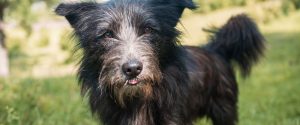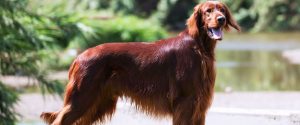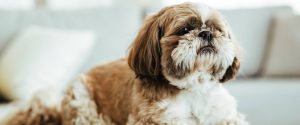If you’ve ever wondered if dogs have hair or fur, you’re not alone. It’s a common question among pet owners, and while it seems simple, the answer isn’t always clear-cut. Understanding whether your dog has hair or fur is not just an interesting fact; it can impact how you care for their coat and manage grooming. Whether you’re a seasoned dog owner or a first-timer, knowing your dog’s coat type is crucial for proper grooming. If you’re ever unsure about how to maintain your dog’s coat, Kontota offers expert mobile grooming services that cater to your dog’s specific needs, ensuring a shiny and healthy coat.
In this guide, we will delve into the difference between dog hair and fur, explore the various dog coat types, and clarify which dog breeds have hair versus fur.
Do Dogs Have Hair or Fur?

To understand whether dogs have hair or fur, we first need to break down the distinction. While “hair” and “fur” are terms used interchangeably in the context of animals, there are some subtle differences.
Hair
Hair tends to grow continuously and has a more delicate, finer texture. It is often longer and more prone to growing in length without shedding. Dogs with hair typically have a coat that requires more maintenance, including regular trimming and brushing.
Fur
On the other hand, fur grows in cycles and is more dense and coarse. It is usually shed periodically, and most dogs with fur experience seasonal shedding. Fur tends to be thicker and provides better insulation for the dog, which is why dogs with fur often have thicker coats compared to those with hair.
While the terminology can be confusing, most dogs technically have fur, but some breeds, like Poodles, Shih Tzus, and Bichon Frises, have hair instead.
Difference Between Dog Hair and Fur

To further clarify, let’s take a deeper dive into the key differences between dog hair and fur.
1.Growth Cycle:
- Hair grows continuously and doesn’t shed as much. It typically grows to a certain length before stopping, which is why dogs with hair (like the Poodle) require regular grooming and trimming to maintain their length.
- Fur, on the other hand, goes through a growth cycle where it grows, rests, and sheds. This shedding is typically seasonal or periodic, depending on the breed.
2.Texture:
- Hair is generally finer, softer, and more delicate. It is less likely to mat and tangle when compared to fur, but it can be more prone to damage from heat and environmental factors.
- Fur is often coarser and thicker. This type of coat provides insulation against the weather, but it can mat and tangle easily if not maintained properly.
3.Maintenance:
- Hair requires more regular grooming to keep it neat and healthy. It doesn’t shed as much, but it can become tangled or matted if neglected.
- Fur sheds more often and may require less frequent grooming, but it can leave loose fur around your home. Regular brushing can help manage shedding and prevent mats from forming.
Dog Coat Types Explained
Understanding the different dog coat types is essential for providing the right care and grooming to your dog. While the debate of whether dogs have hair or fur is important, knowing the specific characteristics of your dog’s coat type can greatly improve your grooming routine. Here’s a look at the various dog coat types and the best practices for caring for them:
1. Short-Coated Dogs

Short-coated dogs have fur that lies close to their skin. Breeds such as Beagles, Boxers, and Dachshunds have short fur that is relatively low-maintenance. These dogs shed moderately, but the shedding is less noticeable due to the shorter length of the fur. While short-haired dogs require less frequent grooming, regular brushing can help remove loose hair and dirt, ensuring their coat remains shiny and healthy.
Grooming Tips: Brush once a week to keep shedding under control and remove any loose fur. A rubber brush or a bristle brush can work well for this type of coat.
2. Long-Coated Dogs

Long-coated dogs, including breeds like Shih Tzus, Afghan Hounds, and Collies, have hair that grows long and requires a higher level of care. These dogs are prone to tangling and matting, which is why regular grooming is necessary. Long-haired dogs require daily brushing to avoid knots and tangles, and they may also need professional trimming or haircuts to keep their coats in top condition.
Grooming Tips: Brush your dog daily to prevent tangles and mats. You may also need to take your dog for professional grooming every few weeks to maintain their coat length and health.
3. Curly-Coated Dogs

Curly-coated breeds, such as Poodles, Bichon Frises, and Portuguese Water Dogs, have a distinctive, tightly curled coat. These dogs don’t shed as much as others, but their curls can easily mat if not properly maintained. These dogs require consistent grooming to prevent tangles, and they benefit from professional haircuts every 4-6 weeks. Curly coats often need to be trimmed to maintain a neat appearance and keep the curls from getting too unruly.
Grooming Tips: Brush your dog at least 3-4 times a week, and book regular professional grooming appointments to maintain their curly coat and prevent matting.
4. Double-Coated Dogs

Double-coated dogs, such as Golden Retrievers, Huskies, and German Shepherds, have two layers of fur: a dense undercoat and a coarser outer layer. The undercoat sheds heavily, especially during seasonal changes (spring and fall). Double-coated breeds need regular brushing to prevent mats and reduce shedding. During shedding season, more frequent grooming may be necessary to manage loose undercoat fur and prevent excessive hair from accumulating in your home.
Grooming Tips: Brush 2-3 times per week to manage shedding and remove loose undercoat fur. Use an undercoat rake or pin brush to reach the deeper layers of the coat and keep it healthy.
5. Wire-Coated Dogs

Wire-haired dogs, such as Schnauzers, Terriers, and Fox Terriers, have a distinctive, rough, and wiry outer coat. This coat requires special attention to maintain its texture and appearance. Wire-coated breeds often need hand-stripping (a method of removing dead hair manually) or professional grooming every 6-8 weeks to ensure their coat stays in good condition.
Grooming Tips: Hand-stripping or using a specialized wire brush can help maintain the wiry texture. Regular grooming appointments with a professional groomer are recommended to keep the coat healthy and in its ideal shape.
Hair vs Fur Dog Breeds
To give you a clearer picture, let’s take a look at some common dog breeds and whether they have hair or fur:
- Dogs with Hair: Poodles, Shih Tzus, Bichon Frises, Maltese, Yorkshire Terriers
- Dogs with Fur: Beagles, Golden Retrievers, Bulldogs, Boxers, German Shepherds, Huskies
While the majority of dogs have fur, certain breeds, especially those that are hypoallergenic or have continuous hair growth, are often referred to as having hair.
Why Does It Matter to Know the Difference Between Dog Hair and Fur?
Knowing whether your dog has hair or fur is more than just an interesting fact; it plays a significant role in how you care for your dog. Dogs with hair generally require more frequent grooming and attention to prevent tangling and matting. On the other hand, dogs with fur may require more attention to manage shedding and maintain a healthy coat.
If you’re ever unsure of the best grooming routine for your dog, don’t hesitate to seek professional help. Kontota offers expert mobile grooming services that are tailored to your dog’s specific coat type, ensuring their coat stays shiny, healthy, and beautiful.
Choose Kontota Mobile Grooming Services: Dog Coat Types Explained
Proper grooming is essential for maintaining your dog’s health and comfort, and Kontota can help. Their professional mobile grooming services are designed to meet the specific needs of your dog, regardless of their coat type. Whether you need a simple bathe, regular haircut, brushing, or a full grooming session, Kontota provides high-quality care in the comfort of your home.
Conclusion: Hair Vs Fur Dog Breeds
Hopefully, you have found the answer to your confusing question: do dogs have hair or fur, and understand the difference between dog hair and fur very well. In fact, knowing the dog’s specific coat type can help you make the best grooming decisions for their well-being. Whether your dog has hair or fur, regular grooming is essential to keep them comfortable, healthy, and looking their best. If you need help, Kontota’s expert grooming services are just a click away to ensure your dog’s coat is always in top condition. Schedule a dog grooming session today and give your dog the grooming care they deserve!
FAQs: Do Dogs Have Hair or Fur?
How can I tell if my dog has hair or fur?
If your dog’s coat grows continuously and requires trimming, they likely have hair. If they shed periodically and have a thicker coat, they likely have fur.
Do all dogs shed?
Most dogs with fur shed at least some, but dogs with hair typically don’t shed much. Some breeds, like Poodles, are even considered hypoallergenic due to their minimal shedding.
How often should I groom my dog?
The frequency of grooming depends on your dog’s coat type. Long-haired and curly-coated dogs need more frequent grooming, while short-coated dogs can typically be brushed once a week.
What’s the difference between a hypoallergenic dog and one that sheds a lot?
Hypoallergenic dogs typically have hair instead of fur, and they shed less. While no dog is entirely hypoallergenic, breeds like Poodles and Bichon Frises tend to produce less dander, making them better for allergy sufferers.
Can I groom my dog myself?
It depends on your dog’s coat type. While regular brushing is easy to do at home, dogs with complex coats may benefit from professional grooming. Kontota offers mobile grooming services that can help with any coat type.



